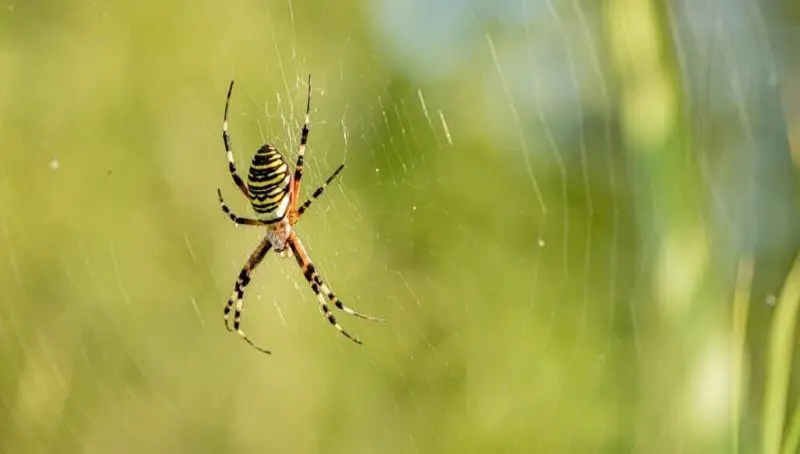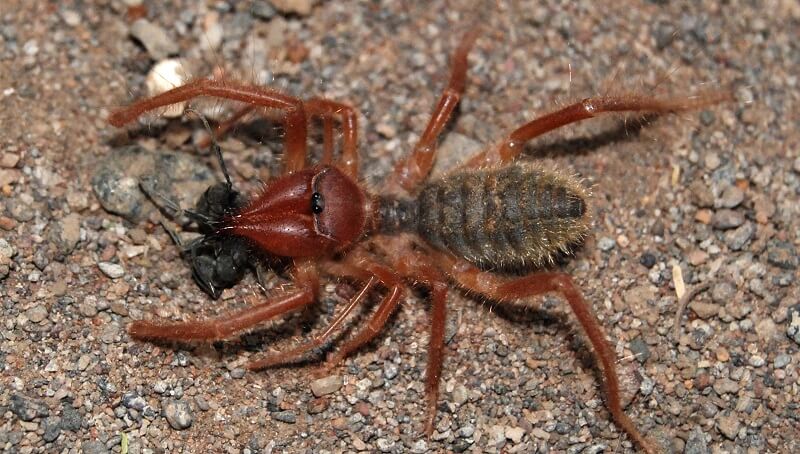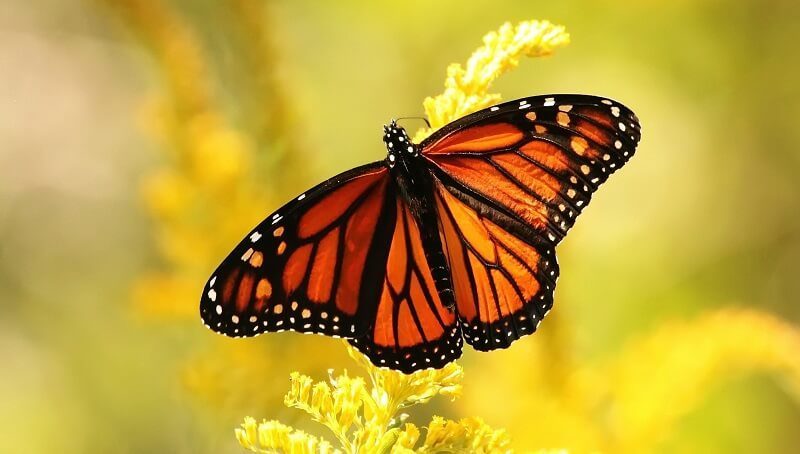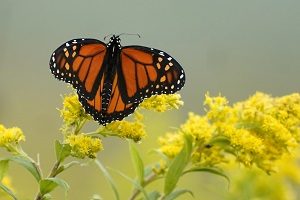
Is a Spider an Insect?
September 7, 2022
Camel Spider Facts
September 7, 2022
The monarch butterfly is a flying insect from the Nymphalidae family. It is characterized by the colorful patterns of its wings, distinguishing orange and black tones.
Geographically, they are found from southern Canada, through the United States and Central America, to South America. It is a species with a very long life span, it can live up to nine months, unlike most butterflies, which have a 24-day life cycle.
They are known all over the world for the majestic migratory show they offer. Danaus plexippus species participate in a massive and extensive migration process. This happens when temperatures drop in their natural habitat, so they try to hibernate in warmer places.
There are two simultaneous migration processes, in the East and West. In addition to monarch butterflies migrating to other latitudes, there are populations of this species that do not migrate. They are located in southern Florida, all over Mexico, Central America, and North and South America.
Aposematism
Both larval and adult butterfly forms protect themselves from predators using the bright colors of their wings. In this way, they warn their attackers about the problems they would face if they attacked.
These insects have quite an unpleasant taste and are poisonous. This is attributed to the presence of cardenolide aglycone in their bodies. This substance enters the body when the caterpillar eats the milk plant because it contains cardiac glycosides, a very toxic compound.
After the caterpillar evolves into a butterfly, these toxins spread to different parts of the body. It is concentrated in its wings in large proportions because this part of the body is preferred by birds.
When they are attacked, the unpleasant taste is likely to drive the predator away and prevents it from ingesting the rest of the body.
The monarch’s life cycle
Eggs
Eggs are the product of mating between males and females. They are deposited by the female on the underside of a young algae leaf.
Eggs are light green or cream-colored and their shape may be conical or oval. Their size is approximately 1,2 × 0,9 mm. They weigh less than 0,5 mg and have several longitudinal ridges.
You might also like my articles on the life cycle of mealworms and praying mantises, and the anatomy of crickets.
As monarch butterflies age, their eggs become smaller. The development of the egg takes between 3 and 8 days, hatching in the form of larvae or caterpillars.
Larva
The development of the larva is divided into five stages of growth. Once each stage is finished, a mole appears. Each caterpillar will be larger than the one before it because it eats and stores energy in the form of nutrients and fats. It will be used during the pupal stage.
First Instar
The first caterpillar to hatch is translucent and pale green. It has no tentacles or staining strips.
It eats the remaining shell of the eggs, as well as it begins to ingest small parts of the milk leaf. Doing so, it moves in a circular motion, preventing the flow of latex from catching it.
They remain in this stage for about 3 days.
Second Instar
At this stage, the larvae develop a pattern of transverse bands of white, black, and yellow colors. It is no longer translucent. Black tentacles begin to grow on his body, one pair appearing on the chest and another pair on the abdominal area.
As in the previous stage, it remains in this state for about 1 to 3 days.
Third larval stage
In this third stage, the caterpillar has different bands, and the back tentacles are elongated. The ends of the chest are differentiated into two. A smaller pair of legs near the head and two larger pairs behind the anterior ones appear.
At this point, the larva begins to eat along the entire edge of the leaf.
Depending on the temperature, the larva stays in this stage for about 3 days.
Fourth Instar
The caterpillar reaches about 13 to 15 mm in length during this stage. On the milk leaf, the caterpillar develops white spots, close to the its back.
It stays in this stage from 1 to 3 days.
Fifth Instar
The bandage pattern is much more complete at this larval stage, as it includes white spots on the tips. It has two small anterior limbs, very close to the head. In this last phase, the caterpillar culminates in growth, measuring between 5 and 8 mm wide and 25 to 45 mm long.
The larva can chew the petiole of the algae leaves, stopping the latex. Before they become pupa, larvae should consume algae to increase their mass.
Toward the end of this phase, the caterpillar stops eating and looks for a place to pupate. At this time, it is strongly adhered to a horizontal surface, using a silk pad.
Then it hangs from the hind limbs, upside down. Later it becomes a chrysalis.
Chrysalis
The chrysalis is opaque and bluish-green, with a few small dots in golden tones. At typical summer temperatures, it can mature between 8 and 15 days. The cuticle becomes translucent, making the black wings of the animal visible.
At this stage, the caterpillar rotates the silk tampon, then hangs upside down, resembling a “J”. Later he loses his skin, being wrapped in an articulated exoskeleton.
Adult
An adult monarch butterfly appears after about two weeks in the form of a seizure. Once it’s out, it hangs upside down to let its wings dry. After this, the various fluids run into the wings, which expand and stiffen.
In the adult stage, the monarch can extend and retract its wings, allowing it to fly. Their diet includes a wide variety of nectar plants.
Reproduction
 Adults are considered mature four to five days after they reach adulthood. Males and females can mate several times. If they hibernate, mating takes place in the spring, before they migrate.
Adults are considered mature four to five days after they reach adulthood. Males and females can mate several times. If they hibernate, mating takes place in the spring, before they migrate.
This species has a private courtship. First, there is an aerial phase, in which the male closely follows the female in the heat. At the end of this type of dance the male pushes it and throws it hard to the ground.
There is copulation, in which the male transfers its spermatophore to the female monarch butterfly. Along with its reproductive purpose, spermatophore also provides nutrients, which help the female lay eggs.
The development of the egg and the stage of the larvae depends on the temperature of the environment, lasting about two weeks. At the end of all stages, the caterpillar appears between 9 and 15 days later as an adult butterfly.
Michoacan, the place of destination to find this type of butterfly, is a legally protected sanctuary and one of the most popular tourist attractions in Mexico. Thousands and thousands of people come every year to witness this miracle of nature. Once at their destination, the butterflies cover the entire area, creating a huge black-orange carpet. It is a breathtaking sight, but human greed threatens to destroy this unique landscape in the world. Last November alone, illegal deforestation in the area resulted in the loss of nine hectares of forest.
And here, in the secular forest of Michoacan, there are more than 130 species of birds, 56 species of mammals, and several hundred species of unique plants, all of which together form a unique biosphere.
